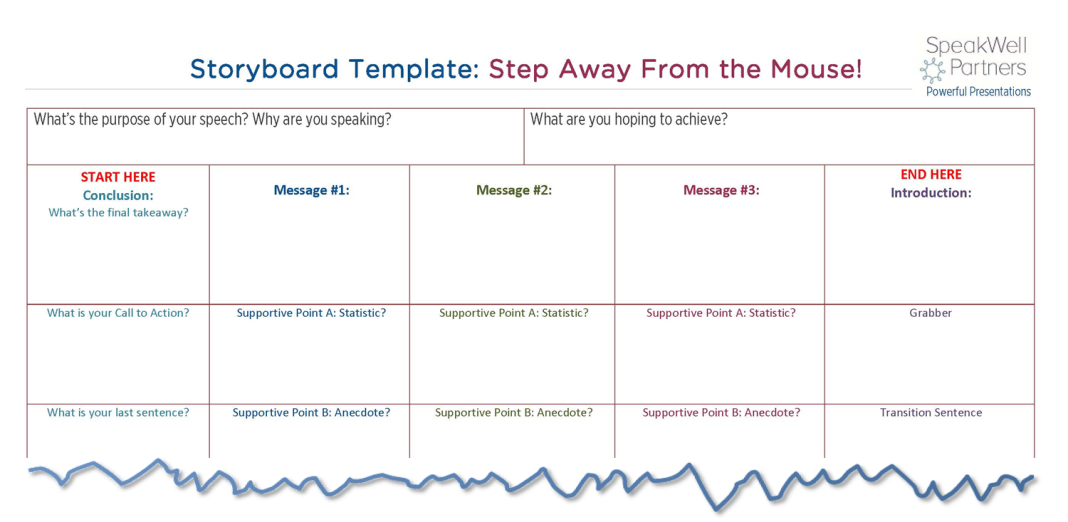An experienced and accomplished presenter, Strategic Services Manager at Rapid 7, Maranda Cigna was not convinced that a public speaking training would be of much benefit. Here’s what she discovered.
Let’s get some backstory first. When did Public speaking become a part of your life/career? I was on the speech team in high school, it was a mandatory part of my MBA education and it’s been integral to my professional career as well.
What was your first memorable presentation? Probably my master’s thesis presentation, because it was such a high stakes situation.
What is the worst public speaking advice you have received? Picture the audience naked! It doesn’t make any sense to me. It doesn’t calm me down, it’s highly distracting and honestly I can’t and don’t even want to do the visualization. Yuck!
Best public speaking advice? Be yourself and let your personality shine through. That means that you should enjoy yourself during the presentation and let the audience know that you are a real person. I try to inject humor and personalize some of my messages with stories and anecdotes to underscore my points. I find that this works especially well when delivering what may otherwise be a dry topic.
How do you prepare for a presentation? Once I have my content and deck in order, I run through it many times. Initially, I run through the presentation and speak it aloud in front of my computer. Once I have the main points down, I will practice during my daily tasks like while driving or cooking dinner. Finally, I do a run through with my ever so gracious husband so I can focus on eye contact and body language.
When are you the happiest during a presentation? When I see engagement – heads nodding, laughter at my lame jokes, and very few people disengaged or on their phones. When they interact with me non-verbally, I know they are listening!
What’s your greatest fear? Going blank. Will I come across a slide and have no idea what to say? Will I fall back on lots of er’s and um’s? I know the audience can see and feel that and it really counts against you when you are presenting. Has that happened much? It’s not been a reality for me, but it’s my fear, and why I always practice, practice, practice!
Public Speaking Pet Peeves? I hate arrogance. An arrogant presenter really turns me off and I have actually gotten out of my seat and left a presentation because the speaker was overly boastful. There is a difference between confidence and arrogance. As a presenter, there is never a need to be conceited – it makes you really unauthentic. I believe that arrogance is actually a mask that unconfident presenters use to protect themselves, perhaps because they are uncomfortable with the content or being in front of an audience.
Any speakers that have moved you? Dr. Hugh Thompson was a keynote speaker at the Rapid7 United Security Summit conference in 2013. He began with an intriguing story about how this random bird got onto an airplane. Thompson was on the flight and his story about the ruckus this bird caused and how they ended up capturing it and locking it in a bathroom for the duration of the flight became the metaphor for him as a professional security expert. “If a bird can get on an airplane, what other vulnerabilities are we susceptible to and what could happen?” I was very engaged and even went out and bought his book after his presentation.
Tell me about using a Storyboard template to organize your content? In the past, when I organized my thoughts, I would simply sit down at a computer, open up PowerPoint and build my content in no particular order. The Storyboard template totally streamlined how I approach organization for my presentations. It seems silly that I haven’t always done this, and from now on, it will be my new approach – it just makes so much sense.
Can you say more? The Storyboard saved me time and so many revision cycles. Ultimately, I think I would have ended up at the same place, but the iterations from my first draft to my last were so much tighter and closely parsed than I had experienced in past presentation revisions. The hour and a half that I spent on the Storyboard up front was my best investment, and ultimately saved me hours of revisions.
Anything else that shifted for you? It also helped shed light on the forgotten stepchildren of the presentation: the introduction and the conclusion. I never used to spend much time preparing for these elements and I typically winged them during my presentations. Now, I am laser focused on what I want to say and I understand that they really help to solidify my message to the audience. The storyboard also encouraged me to find relevant quotes to use as visual segues for my ideas. They are so much better than, “And now we are going to talk about…” and allow you to add humor, whimsy, or additional support to your presentation.
Parting advice for the reader? When I am up on stage, it is important to me that I  enjoy presenting just as much as the audience enjoys and learns from what I am saying. The key to communicating effectively and to feeling confident with your content is to prepare and practice! When you feel confident, your personality shines through and everyone enjoys themselves!
enjoy presenting just as much as the audience enjoys and learns from what I am saying. The key to communicating effectively and to feeling confident with your content is to prepare and practice! When you feel confident, your personality shines through and everyone enjoys themselves!
Thanks Maranda. Your completed Storyboard template is A+!
– Charlotte


